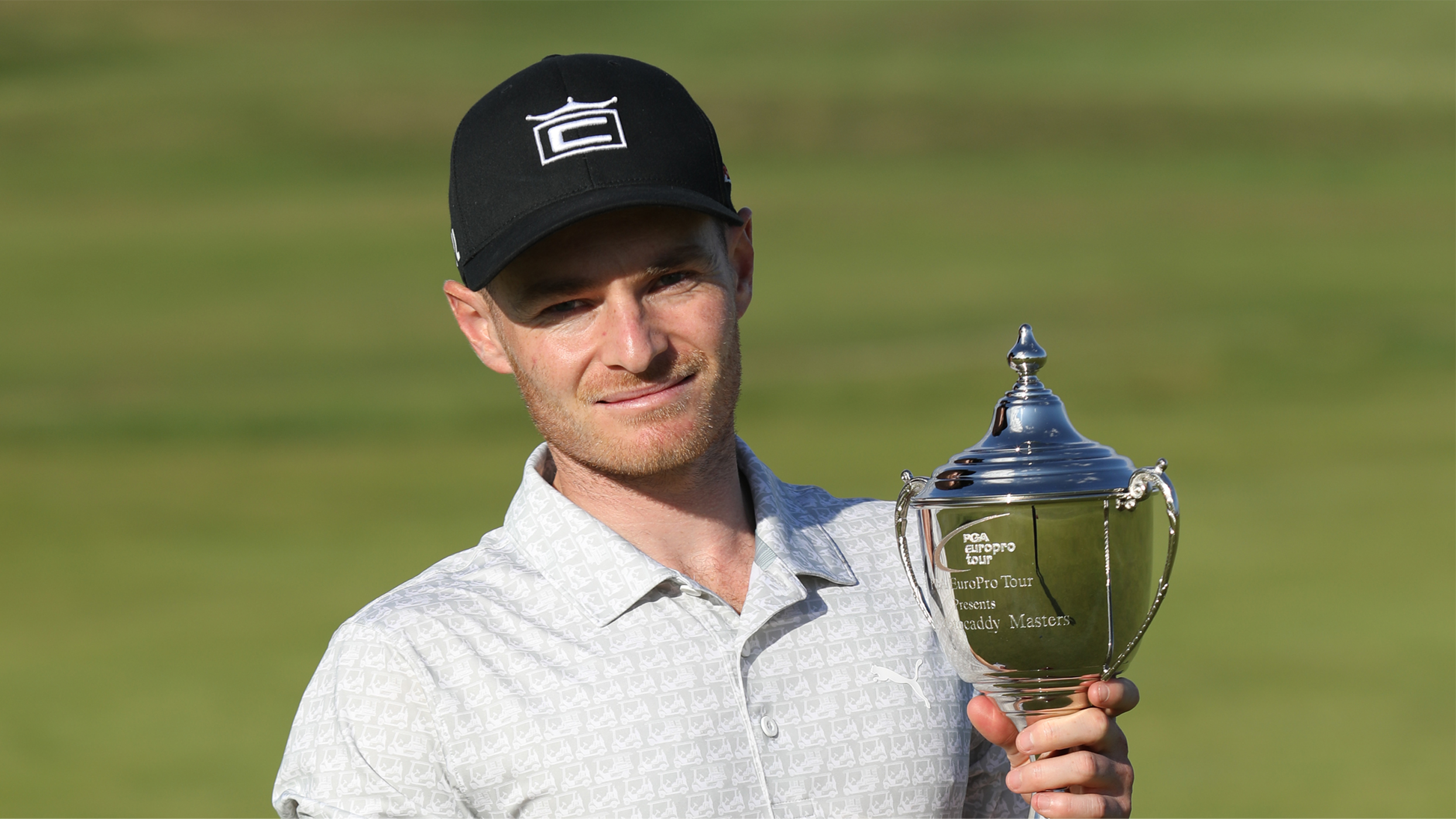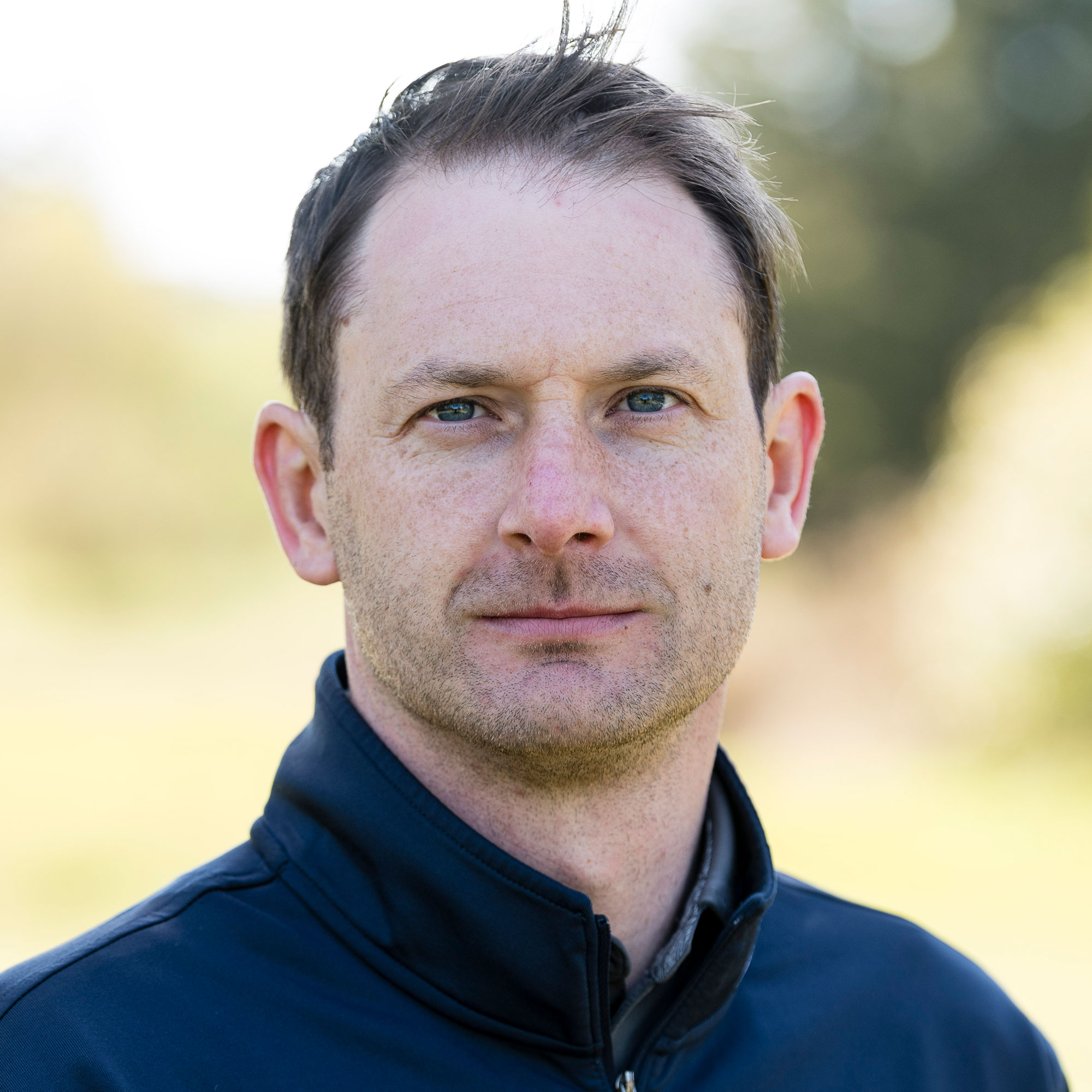Revealed: A New Way To Approach The Mental Side Of Golf
Andy Morrison reveals a fresh tactic to help you play better: Stop thinking and start playing


Quite how many books have been dedicated to the mental side of golf is anyone’s guess as we look to build confidence in golf – but it's safe to say it runs into the thousands.
You might have one on your desk or bedside table; perhaps there’s even one in the smallest room in the house. And we’ve all watched videos and pored over articles in a bid to find the secret to having a stronger mental game.
Often we are encouraged to find a preferred state, do a ‘thing’, or adopt a process, whereby what you do is supposed to allow you to take control and master what is seen as a critical element of golf.
It might be a finely honed pre-shot routine or a dot on your glove to look at in order to get in ‘the zone’.
But there might be another direction to look in.
In our quest to shoot lower scores, it’s understandable that we look for answers and experiment with different strategies and techniques.
However, this is where it can get messy, as golf mind coach Andy Morrison explains, for the mind is like a snow globe and if you shake it… well, it gets stirred up.
Subscribe to the Golf Monthly newsletter to stay up to date with all the latest tour news, equipment news, reviews, head-to-heads and buyer’s guides from our team of experienced experts.
Morrison was a county player, but, as he will admit himself, he did throw the odd club as his thinking got the better of him.
He stopped entering competitions because “it looked like anxiety and agitation came from competitive golf”.
It would lead him to study hypnosis and Neuro-Linguistic Programming (NLP), something he devoted ten years of his life to.
Then he discovered an altogether different theory, championed by, among others, philosopher Sydney Banks.
It’s called the ‘inside-out’ model of understanding. In other words, it’s not possible for humans to change their state of mind via an outside technique. Compelling, yes, possible... not so sure.
“You’re never going to see things as clearly with more thought,” Morrison explains.
“We all get caught up in our stories and believe them to be true, but if thoughts come and go naturally, do we really need to reach for a technique to make them go?"
This philosophy points to the nature of thought, rather than being fixated on the content of thinking, a distinction Morrison is keen to make clear.
Battling golf’s untruths
You’re on the range ahead of the monthly medal and hitting the ball beautifully, thinking, ‘This is going to be a very good day.’
Or, there’s the time – maybe a more frequent occurrence – when you’re striking it really poorly. Then it’s, ‘Goodness, this is going to be an ugly round.’
“It’s not a truth,” says Morrison. “We’ve all had rounds where we’ve hit it rubbish on the range and played well, and vice versa.
“It’s quite common for us to think this way. This is that gentle shaking of the snow globe continuously, and believing the snow to be true. The golf course is neutral but for our thinking about it.”
Everyone has their own ‘problems’ or seeks help for different reasons, but Morrison says it all comes back to the same thing – buying into a particular story and believing it to be true – and this is where we can lose our way.
Imagine you’ve started the round well, level-par through six. Suddenly, a loose one and you’re on the green facing double bogey.
The voice in your head is saying, ‘It’s important I don’t make seven here.’ So you change your pace, read the putt from every angle, and then… you miss!
“You’ve bought into the story,” Morrison says. “In this case, it’s the story of importance, and that’s an innocent misunderstanding in action.
You’re looking through a snowstorm. The more we invest in our golf game story – whether it’s importance, expectations, predictions and so on – innocently it shakes that globe, and then you wonder why your golf game doesn’t show up!”
That’s all well and good, but what if we keep having these thoughts? After all, that’s what happens, isn’t it?
Think of the 1st tee, or when you’re on the range hitting it poorly and convincing yourself you’re in for a bad round. The question is: how do we control our thoughts, or stop negative thoughts entering our head?
The simple answer is, you don’t – or, rather, you can’t, and attempts to do so will just prove futile. It will, as Morrison says, take you “further and further away” from your authentic self.
However, when a player learns to become more aware of thoughts, and they begin to understand that they just come and go, it’s often game-changing, and way more powerful than any intervention strategy.
Morrison’s skill lies in observing players, asking questions and pointing them in the right direction.
This accepting of thoughts for what they are and carrying on your business might sound simplistic – too good to be true, even.
But for a number of players, it really works, and it helps them to find that place, or state, in which they play their best golf.
Michael Palmer and Rupert Kaminski, who ply their trade on the Sunshine Tour, are two big advocates.
“I’m no longer trying to control my thoughts,” says Palmer, whose ongoing understanding of the nature of thought has helped make him a “more objective golfer”.
He’s enjoying a fine run of results, too, and only missed out on victory by a single shot at the Sunshine Tour Invitational in September.
“I’m more aware of what my thoughts represent. Andy’s also helped me to understand the ego, and I feel more consistent, more realistic and free.”
Ah yes, the ego thing – it comes up a lot. In fact, we all probably suffer with an ego problem from time to time – certainly on the course, that is. Once, when playing alongside Wilco Nienaber (currently the longest hitter on the European Tour), Palmer spent most of the round watching his powerful compatriot.
He missed the cut, he says, because he was too busy comparing himself to Nienaber. Not good.
The quest for authentic golf
Kaminski says previous attempts to deal with his thoughts were like “putting on a band aid”.
He too reveals how he’s learnt to take the ego out of the equation more often. “A lot of golfers, and this was me, get caught up in their thoughts and you start to believe them,” he says.
“It’s just your ego trying to take control of things. Whatever scenarios you’re coming up with in your head aren’t real, so once you realise that, and almost look past it, that’s when you can start to play authentic golf again.”
Palmer offers another example of how ego might rear its ugly head on the course, and we’ve certainly all been here.
He’s playing against someone who’s spraying it all over the place, but despite the fact he’s playing the better golf, the scorecard says differently.
“I’m asking myself how this guy is beating me. Those stories carry on in your head and your ego will be struggling with losing to someone who isn’t hitting the ball as nicely.
“I’m more aware now of when I’m buying into my ego – they’re just thoughts. This has helped me to focus on what I need to.”

Michael Palmer and Rupert Kaminski
Someone else who is gaining a better understanding of this is Jack South, who talks with Morrison on a regular basis.
South recently shot 59 on the PGA EuroPro Tour to win the Motocaddy Masters title, as well as a £59,000 bonus. How did he cope under the pressure of posting that rare number? What strategies did he employ to stay in the zone to stop negativity creeping in?
None of this, as Morrison explains, gets spoken about in the inside-out conversation.
“The power source behind the scenes (a source that we are never disconnected from but can be temporarily blindsided to) is a power that, whenever a player taps into it, they report a surge in authenticity, a deep knowing that regardless of what thoughts pop in they are just fine.

Jack South recently fired a 59 on the EuroPro Tour and speaks regularly with Morrison
That, and a realisation that to shoot low scores they don’t have to access a preferred state of mind and remain there until they’ve completed their performance.”
It’s not that interventions can’t be useful, and Morrison accepts that if something works for you, you may want to stick with it.
But his view will always be that more ‘snow’ generally won’t help. With interventions, he also suspects the placebo effect comes into play – that an intervention can appear effective when it’s your belief in it that’s actually having the effect.
Follow Morrison on Twitter...
He’s @AMGolfMindCoach – and you might just pick up a few nuggets to help guide you down a better path.

Michael has been with Golf Monthly since 2008. A multimedia journalist, he has also worked for The Football Association, where he created content to support the England football team, The FA Cup, London 2012, and FA Women's Super League. As content editor at Foremost Golf, Michael worked closely with golf's biggest equipment manufacturers and has developed an in-depth knowledge of this side of the industry. He's a regular contributor, covering instruction, equipment, travel and feature content. Michael has interviewed many of the game's biggest stars, including seven World No.1s, and has attended and reported on numerous Major Championships and Ryder Cups around the world. He's a member of Formby Golf Club in Merseyside, UK.